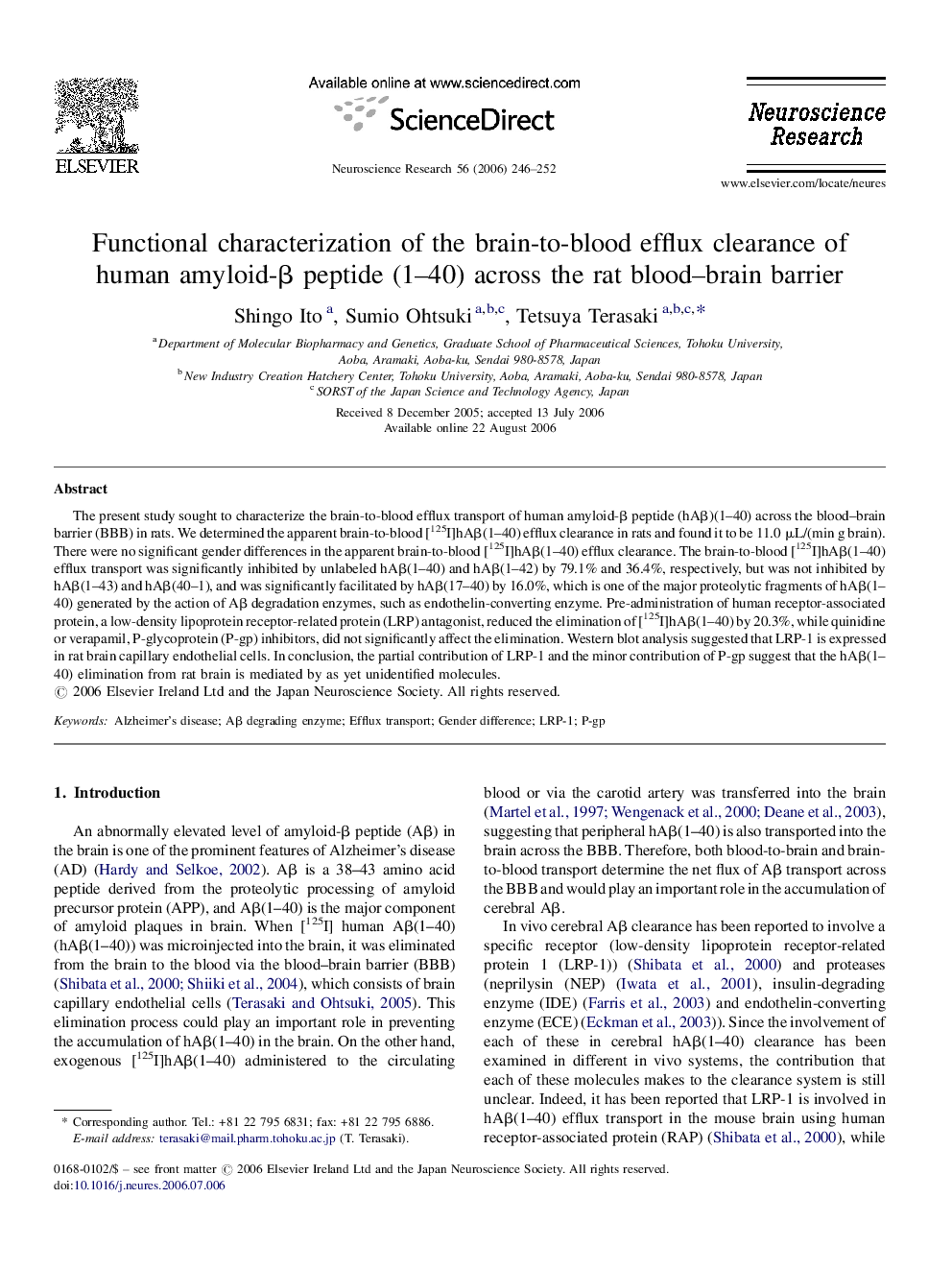| Article ID | Journal | Published Year | Pages | File Type |
|---|---|---|---|---|
| 4353178 | Neuroscience Research | 2006 | 7 Pages |
The present study sought to characterize the brain-to-blood efflux transport of human amyloid-β peptide (hAβ)(1–40) across the blood–brain barrier (BBB) in rats. We determined the apparent brain-to-blood [125I]hAβ(1–40) efflux clearance in rats and found it to be 11.0 μL/(min g brain). There were no significant gender differences in the apparent brain-to-blood [125I]hAβ(1–40) efflux clearance. The brain-to-blood [125I]hAβ(1–40) efflux transport was significantly inhibited by unlabeled hAβ(1–40) and hAβ(1–42) by 79.1% and 36.4%, respectively, but was not inhibited by hAβ(1–43) and hAβ(40–1), and was significantly facilitated by hAβ(17–40) by 16.0%, which is one of the major proteolytic fragments of hAβ(1–40) generated by the action of Aβ degradation enzymes, such as endothelin-converting enzyme. Pre-administration of human receptor-associated protein, a low-density lipoprotein receptor-related protein (LRP) antagonist, reduced the elimination of [125I]hAβ(1–40) by 20.3%, while quinidine or verapamil, P-glycoprotein (P-gp) inhibitors, did not significantly affect the elimination. Western blot analysis suggested that LRP-1 is expressed in rat brain capillary endothelial cells. In conclusion, the partial contribution of LRP-1 and the minor contribution of P-gp suggest that the hAβ(1–40) elimination from rat brain is mediated by as yet unidentified molecules.
